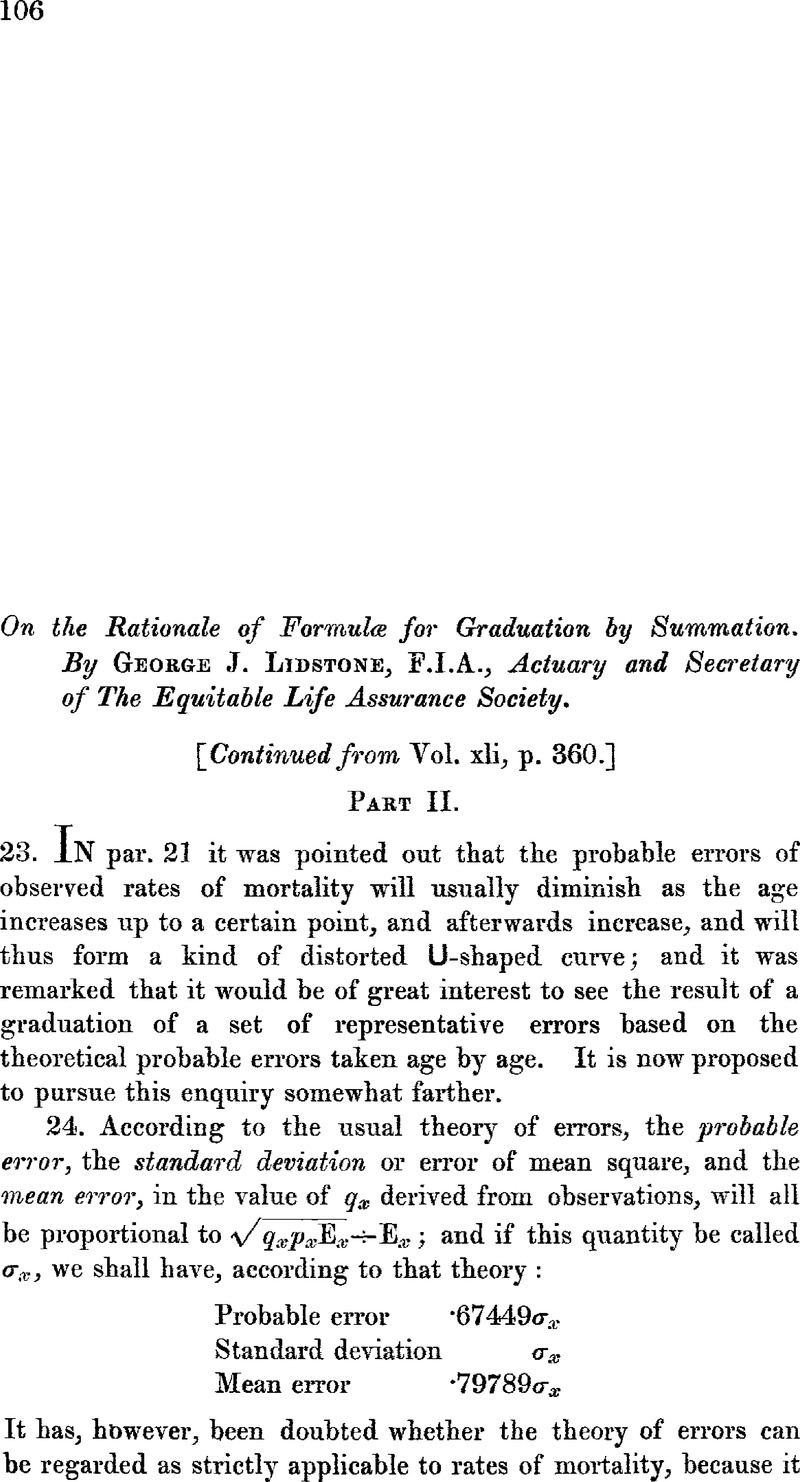Published online by Cambridge University Press: 18 August 2016

page 107 note * Difficulties of a more deeply-rooted nature—arising out of the fact that qx in a mixed body of lives is not a simple probability like the probability of tossing head, &c., but a complex quantity compounded of many different individual q's—will be found in Chap. XII of Bertrand's Calcul des Probabilités, a most valuable book, which should he in the hands of every actuary.
page 107 note † This will be used as an abbreviation of “standard deviation.”
page 109 note * The principal objection to which the use of these data is open is that the possible deviations, namely, 0, 1, 2 … progress by increments of unity, which is a large proportion of the s.d.; so that the possible deviations are discontinuous, whereas in the mortality experience they progress by such small increments as to be practically continuous. It is thought that the objection is not practically very serious for the present purpose.
page 114 note * See pars. 58–65, where it is shown that this limitation is unnecessarily stringent.
page 115 note * A carious transposition of coefficients in Mr. Hardy's equation, not affecting his results, is here corrected.
page 121 note *
The reason for this will he seen on reference to par. 44, where it is shown that summations beyond three must remain in the formula for δ3
u'u, and that the excess summations may be taken to he applied to the operand. Subject to the blending of positive and negative coefficients (before referred to), the general effect of such summations will be to increase the numerical sum of the coefficients of the operand, and hence to tend to counteract the effect of the additional factors in the fractions ![]() .
.
page 126 note * Cf. Spencer, , J.I.A., xli, 391.Google Scholar
page 133 note * It may be worth while to point out that the required expressions can be obtained in a much more direct and less tentative way, leading direct to the simplest expression for the operand. Take, for example, Mr. King's formula C (J.I.A., xli, 547). The governing summation being [5]3, we must have, writing coefficients only,
[5]3[operand]=u'=[–2, –6, –9, –8, 0, 21, 53, 87, 114, 125, 114 …–2]
or, expanding [5]3,
[1, 3, 6, 10,15,18, 19,18… l][operand]=u'
as before.
The operand may, therefore, be found at once by dividing
[–2, –6, –9, –8, 0, 21, 53, 87, 114, 125, 114 … –2]
by [1, 3, 6, 10 … 1 9 … 1]
according to the method of detached coefficients.
This gives at once as quotient,
[–2,0, 3,3,3,0, –2]
corresponding to the shortened form given (J.I.A., xli, 559). The other formulæ may be obtained in exactly the same manner.
page 135 note *
This result can be obtained at once by the method of separation of symbols. Thus— ![]()
Whence, ![]()
The demonstration given in the text is probably simpler to students, as it exhibits the actual terms in the summation.
page 136 note *
Any interpolation formula, reduced to summation, gives ![]() (operand)= u'; therfore
(operand)= u'; therfore ![]()
Please note a has been issued for this article.